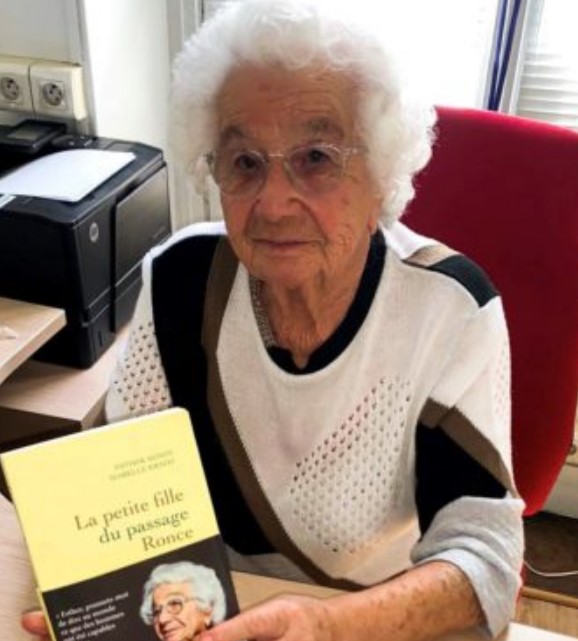Esther Senot: What Is Her Age? Height, Weight, Relationship, Affairs, Family, Bio And More
Esther Senot (passed away on December 15, 1924, and was remembered on July 10, 2021) was one of the few people to have survived the Auschwitz concentration camp.
Because she was a member of the Women’s Orchestra of Auschwitz, she managed to survive the concentration camp.
She participated in a variety of activities, such as giving lectures and writing music, with the goal of preserving the memory of the Holocaust.
At the International Youth Gathering that was held yearly at the Max Mannheimer Study Center in Dachau, she was a frequent speaker.
If you are interested in Esther Senot Wikipedia, you are aware that Senot was one of the few people to survive the Nazi concentration camps at Auschwitz and Birkenau.
At the Auschwitz-Birkenau concentration and extermination camps, which were run by the Nazis, it is estimated that over 1.1 million people, the vast majority of them were Jews, were slaughtered.
Esther Senot is one of the few people who have survived the horrors that took place in a Nazi concentration camp.
At the age of 15, she was transported from the Drancy camp to the Auschwitz-Birkenau concentration camp. Her journey began in Drancy.
Throughout the past thirty years, Senot has made it her mission to inform middle and high school children about this troubling period in history by sharing her testimony with them.
She has co-authored a book with Isabelle Erno titled “La petite fille du passage Ronce,” which was released by Grasset. The book was written in French.
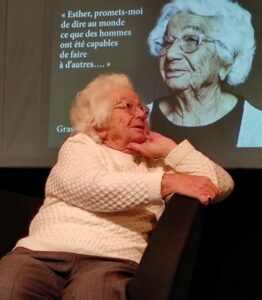
Also Read: Neil Oliver: Illness And Health Updates, Bio, Career, Wife, Children And Net Worth (2023)
Table of Contents
Esther Senot: Wiki
Although Esther Senot does not have a page on Wikipedia, her courageous life story has been reported by a number of other publications.1
During World War Two, nearly one million individuals, the vast majority of whom were Jewish, were murdered at the Auschwitz-Birkenau concentration camps.
Senot is one of the few people to have survived the camps.
It was the largest of the Nazi concentration camps, and it was located in Poland. It was operational from the year 1940 until the year 1945, when it was liberated by Soviet forces.
She arrived in Birkenau on September 2, 1943, having been deported the day before (September 2, 1943). By accident, she was able to locate her sister there.
They were given considerable leeway in the latrine barrack during the evenings since the kapos tried to avoid going there because of the foul smell.
Even though she had arrived in September, it wasn’t until December before she recognised her sister.
She stayed with her until April 1944, when her sister became unwell and had to be taken to “le Revier.” After that, she went on to live on her own (the death room).
She was in a hurry to see her sister, and it was at that moment that her sister gave her a hug.
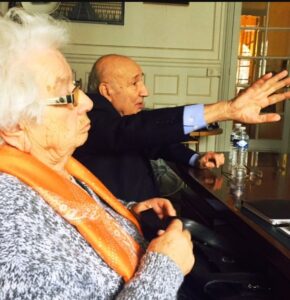
Esther Senot: Age
Esther Senot was born in 1929, which makes her 94 years old today. In July of 1942, during the roundup at Vel d’Hiv in Paris, Esther’s family was among those who were arrested.
Esther Senot: Early Life
Esther made it through the tragedy despite the fact that she was only a teenager at the time.2
A year later, though, she was detained for questioning during an identity check, and after that, her life became a living nightmare.
She was incarcerated in block 27 at Auschwitz-Birkenau, along with another 600 people, after being transported there.
In order to enter the concentration camp, inmates were had to have their heads shaved, their clothes taken away, and their arms and legs tattooed with identification numbers.
The procedure was dehumanising, and they were given the instruction to commit their number to memory in German and Polish because their names were no longer relevant to who they were. The number that Esther had was 58 319.

Esther Senot: Family and Multiethnic Background
The Senot family, consisting of Nuchim and Gela Senot and their seven children, including Esther, who was the sixth child, relocated to France in the year 1930.3
Yiddish was the family’s primary language and they lived in Belleville. They were communists despite the fact that they did not follow any religion.
Esther’s father was a shoemaker but his health was poor, so Esther’s crippled mother took care of Esther at home while Esther’s father worked.
Israel, one of Esther’s brothers, joined the International Brigades in 1936 and participated in the Spanish Civil War. After the war, in 1939, Israel immigrated to the Soviet Union.
His brother, Maurice, enlisted in the military in 1937 and was stationed in Pau with his unit in 1940. During his time in the military, he witnessed both the Phoney War and the Debacle.
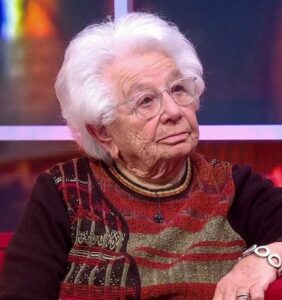
Esther Senot: Life Story
- Her life became much more challenging after this moment, and her family began to be ripped apart as a result of the government’s actions.
- It all started when the French authorities seized her brothers and transferred them to internment camps in France.
- Esther’s mother, father, and brother were all kidnapped during the infamous Rafle, also known as the Roundup, of the Vel d’hiv on July 16, 1942.
- Esther and her sister were the only ones to have evaded capture during this time. But, she was not with her sister; rather, she was by herself.
- Esther has the most remarkable ability to downplay her own bravery, determination, and strength when she talks about them.
- Indeed, she is alone herself. Indeed, she had just witnessed the rest of her family being taken into custody.
- It is true that she cannot locate her sister. So how can you search for someone when you know they are hiding and you are also attempting to conceal your identity?
- Esther divided her time between a few different orphanages as well as a few months that she spent living with one of her brothers who had fled (in Pau).
- She was forced to move around frequently between several orphanages in order to find a place to reside; however, she was eventually taken into custody.
- She was taken captive for a brief period of time during the French Revolution in a cell that was ironically located next to the cell in which Marie Antoinette was detained.
- In August of 1943, Esther was sent to Drancy and then transported to Auschwitz in September of the same year.
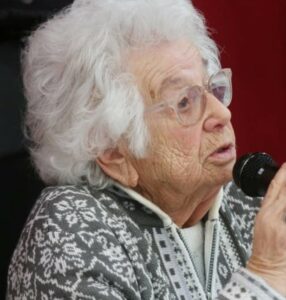
Also Read: Morena Beltran: Bio, Wiki, Age, Career, Family, As A Journalist and More
Esther Senot: More Details
- Her stay at Drancy was negligibly brief in comparison to those who had been transported there at an earlier stage of the conflict.
- She was part of the 59th convoy that was transported to the extermination camps, which was the second convoy that was transported that day.
- Each convoy carried a minimum of one thousand individuals, a quota that was met by include children who had been taken from a neighbouring children’s home as well as elderly persons who had been taken from a retirement home.
- Each cattle car had approximately sixty individuals, one pail for use as a toilet, and one pail for use as a source of drinking water.
- She recalls how babies and old people were among those who passed away during the course of the three days spent in the dark cattle car.
- They arrived in Poland somewhere, and upon their arrival they were met by German bludgeons and nasty jumping dogs. Several of the people on the convoy were exposed to Nazi uniforms for the very first time at this point.
- They queued up one by one, and were passively commanded “à droite, à gauche, à droite, à gauche” (right, left, right, left).
- This resulted in there being 106 women and 220 men among them. After that, they were herded en masse to Auschwitz II-Birkenau.
- Esther vividly recalls the horrible odours that greeted her upon her arrival. I can tell that she is recalling the event because of the expression she has drawn on her face.
- They were finally able to go to the barracks, and once they did, they were given permission to have a genuine shower.
- She, along with the other prisoners, had to learn their numbers extremely rapidly in Polish and German; if they didn’t react with their number during roll call, they were beaten. She and the other prisoners had to learn their numbers in Polish and German.
- Esther was one of 106 women from her convoy who entered Birkenau. She was the only survivor. Esther was one of only two of the group of 106 women that decided to flee.
- From the standpoint of Penn State, this is the same as reducing the capacity of the classroom 100 Thomas, which can accommodate 726 students, to just thirteen persons.
- After Esther had finished telling us her story, a guy joined us and answered our questions for both of them.
- We had questions for each of them. At the time, I was unaware of the fact that this individual was Raphael Esrael, the current President of the Union des Déportés d’Auschwitz as well as a survivor of the Auschwitz concentration camp.
- Raphael was taken into custody for using forged identification documents.
- It is a really humbling experience to be in the same room with a woman and a guy who have both been through terrible experiences.
- Both have had to put up with a level of everyday debasement that I do my best to avoid imagining.
- But what a tremendous privilege it is to be able to sit with them, engage in conversation with them, and quiz them! The narrative of their experiences can be documented in some fashion, be it on paper, in audio form, or on video.
- Yet, the window of opportunity to engage in human conversation and make physical touch with them is not going to remain open for very much longer.
- Both of them are in their late 80s at this point. Both of them have SUCH a vibrant personality. Both of them are incredibly modest and feel that it is extremely important to relate their experiences.
